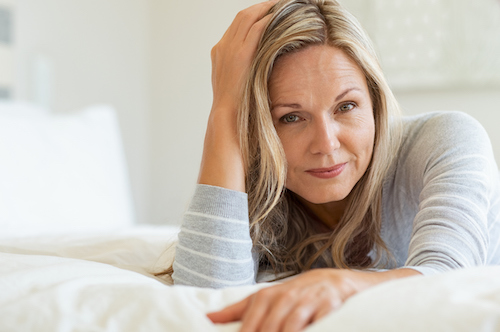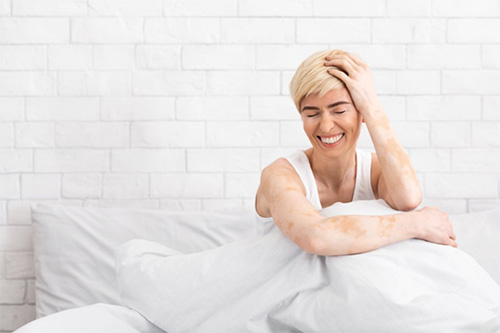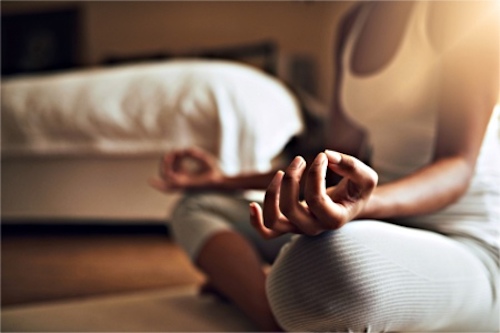Authored by Dr. Mary James, ND
If you want a clear example of what’s wrong with women’s health care today, the new drugs for low libido show it all. Here you’ll see all the forces at play — women’s needs, the conflicting voices in media, the pharma-medico-regulatory complex — and in the end, lots of money is made while women’s needs are not being met.

But let’s be clear: low libido is a real issue for many women. It affects a huge and growing number of them, especially after age 35, and is often most severe in the years before and after menopause. It cuts us off from the most normal pleasure in life, and the stress and guilt it induces can create strain in our relationships.
That’s why many feminists have argued for years that the pharmaceutical industry owes women a simple solution, like Viagra and Cialis for men. And who doesn’t love a simple fix? But low libido is more complex than erectile dysfunction, and sexual desire in women is more complex than sexual desire in men. What’s more,the new drugs for women have a much worse risk/reward ratio than is described in their marketing; the new drugs are certified for just a fraction of women, yet marketed almost as a cure-all; and doctors are likely to prescribe them off-label rather than treating the underlying causes.
Should you take these new sex drugs for women? Or your sister? Or your friends?Before any of you answer, let’s understand the nature of libido, how these drugs work, and more about their side effects and health risks. There’s important knowledge you need first but most likely won’t get from your doctor or the FDA.
What libido drugs for women do
To understand how these drugs work, you need to realize that sexual desire and excitement is something that happens (mostly) in the brain, especially in women. It involves a multitude of neuro chemicals acting together: dopamine, melanocortin, oxytocin, vasopressin, and norepinephrine. Dopamine, the “pleasure neurotransmitter,”has an obvious role to play, and we have a pretty good sense of why oxytocin (the“cuddle hormone”), vasopressin (the blood pressure elevator), and norepinephrine (an “excitement hormone”) come into play — the role of melanocortin is a bit more mysterious, but it appears to be essential to sexual arousal in both men and women.
In many women diagnosed with what’s called hypoactive sexual desire disorder(HSDD), serotonin is elevated and dopamine is suppressed — and since elevated serotonin blocks sexual desire (a common side effect in serotonin-based antidepressants),it leaves the woman physiologically uninterested in sexual activity and may lead to emotional distress and problems in her relationship. Once you know this, it’s obvious why the two drugs on the market target neurotransmitters:
- Addyi (flibanserin) decreases levels of serotonin and increases dopamine in the brain to offset the imbalance that leads to HSDD. It doesn’t act immediately, but must be taken as a pill nightly (because it causes drowsiness) to build up levels in the bloodstream.
- Vyleesi (bremelanotide) doesn’t address the serotonin/dopamine imbalance; instead, it boosts melanocortin to produce sexual arousal regardless of the dopamine deficit — so you get the arousal but not necessarily the pleasure, which seems a bit self-defeating. Vyleesi is self-injected into a muscle, which by itself makes it a no-go for a lot of needle-phobic women.
Side effects of libido drugs
Not having sex (and not getting to enjoy the closeness it brings with your partner)can be distressing — there’s no question. But the drawbacks to these drugs are pretty serious:
- Aside from the drowsiness it causes, Addyi can cause low blood pressure and cannot be used with alcohol — even casual use (e.g., a glass or two of wine) can cause significant drops in blood pressure that lead to fainting, making it a potential safety issue for women who drink alcohol despite the warning. It also can’t be taken alongside drugs that inhibit the CYP450 pathway, such as the antifungal, fluconazole (Diflucan), and there are some indications that birth control pills are a problem too. Only about half the women in the clinical trials saw a clear benefit beyond placebo, and it can take anywhere from 4–12 weeks to become effective.
- Vyleesi caused nausea in 40% of women who used the drug in the clinical trials, 13% of whom needed anti-nausea medications (for some, it was severe enough that they dropped out of the trial). The drug also can cause darkening of the skin and gums, and it cannot be used in women with high cardiovascular risk or high blood pressure (unless, of course, you boost her blood pressure meds, which of course can cause problems, too). Doses are limited to 8 per month.
- So far, there is no long-term data — none — for either drug.
Lots of red flags
The side effects are just some of the reasons why I’m leery of these drugs.The way they’re being promoted to physicians is another. There are hugered flags.
For instance: FDA guidelines say these women’s libido drugs are supposed to only treat premenopausal women who, in their words, “for no known reason, have reduced sexual desire that causes marked distress,” which they specify to mean that the lack of sexual desire “is not due to a co-existing medical or psychiatric condition, problems within the relationship or the effects of a medication or other drug substance.”
Yet the very problem these drugs are designed to “correct” — an imbalance of neurotransmitters in the brain — is a coexisting condition.Overproduction of serotonin and underproduction of dopamine don’t happen forno reason! And healthcare providers should be looking at what those reasons are(assuming they’ve identified this neurotransmitter imbalance), so they can be addressed rather than masked by medication.
Another concern: the 2017 expert panel that defined HSDD was composed almost entirely of consultants or advisory board members for the drug company that developed Addyi. This same drug manufacturer was recently reprimanded by the FDA for lobbying to remove the alcohol warning altogether — although the FDA allowed them to soften the safety warning’s language to suggest that alcohol use was “a concern” and should be avoided within two hours oftaking the drug.
We have to be wary of what we’re being told in an era when the rules about FDA approvals have been relaxed. Drug companies are no longer required to publish the actual data from clinical trials, so we can’t even look at the raw data to see whether the authors’ conclusions are justified (and looking at the conflict of interest statements on some of the articles… let’s just say I’ve got my doubts).
And then there’s the marketing
Not surprisingly, the marketing for these drugs is simplistic. Yet there are all sorts of reasons — physical, hormonal, neurological, emotional, and psychological— why a woman might have difficulty becoming aroused or even wanting to become aroused. So you’d think there’d be very, very few women for whom not one physical or psychological factor contributing to low libido or HSDD could be uncovered if someone looked at all the possibilities, right?
But the (drug company-sponsored) websites that “educate” patients and providers about HSDD proclaim it to be “the most common” cause of sexual dysfunction in women and claim that as many as one in ten women suffer from this condition — and frame treatment as something that isn’t just helpful,but an inalienable right (one website for patients is called “righttodesire.com”).
My biggest objection to the marketing is the emphasis placed on “dysfunction.”Women’s sexual response is less linear than that of men, meaning that sexual desire is much less likely to occur on its own and need an outlet (release of sexual tension). Instead, it’s highly influenced by factors such as relationship,body image, feelings of acceptance, and erotic stimulation. In short, it’s more responsive than spontaneous. Many women have no problem with their sexual function once aroused. Getting there is a different matter, and one that’s usually not explored in the doctor’s office. With such focus on sexual dysfunction,women are made to feel broken and guilty. It was for precisely this reason that“HSDD” for women was removed from the Diagnostic and Statistical Manual(DSM) of Mental Disorders in 2013, and replaced with Female sexual interest/arousaldisorder (FSIAD) — a diagnosis that applies to women lacking responsive desire and/or the ability to get aroused.
So, anyone who slaps the label “HSDD” on a woman prior to treating her with these drugs may be failing her in at least a couple of different ways: 1) by not appreciating the differences in men’s and women’s sexuality, a normal woman is made to feel defective and isn’t helped; and 2) by overlooking a variety of other possible health problems, a woman goes untreated and isn’t helped. And that’s not even touching on the fact that postmenopausal women’s libido issues are brushed aside, since these drugs aren’t approved for use after menopause — even though women are more likely to experience low libido after menopause than before.
There’s no question that women deserve to have a fulfilling sex life and healthy sex drive — but I find it disturbing that drug companies are using feminist,sexual empowerment language to promote medications that (1) aren’t necessarily the best, or even a good, solution for low libido (which, let me be clear, can be a very real problem); (2) carry potentially dangerous side effects; and (3) do nothing to get at the “unknown” root causes of sexual dysfunction.
There are many reasons why a woman might experience a decrease in libido —and we should be looking for those reasons and trying to correct them, not just giving her a pill or a shot as a quick fix.
 |
Give your libido a lift — naturally! Read: Menopause sex breakthrough: 4 steps to better sex. |
https://www.nytimes.com/2019/06/21/health/vyleesi-libido-women.html
https://www.fda.gov/news-events/press-announcements/fda-approves-new-treatment-hypoactive-sexual-desire-disorder-premenopausal-women
https://www.ncbi.nlm.nih.gov/pubmed/31204297
https://www.statnews.com/2019/06/20/women-sex-drive-experimental-drug-bremelanotide/









